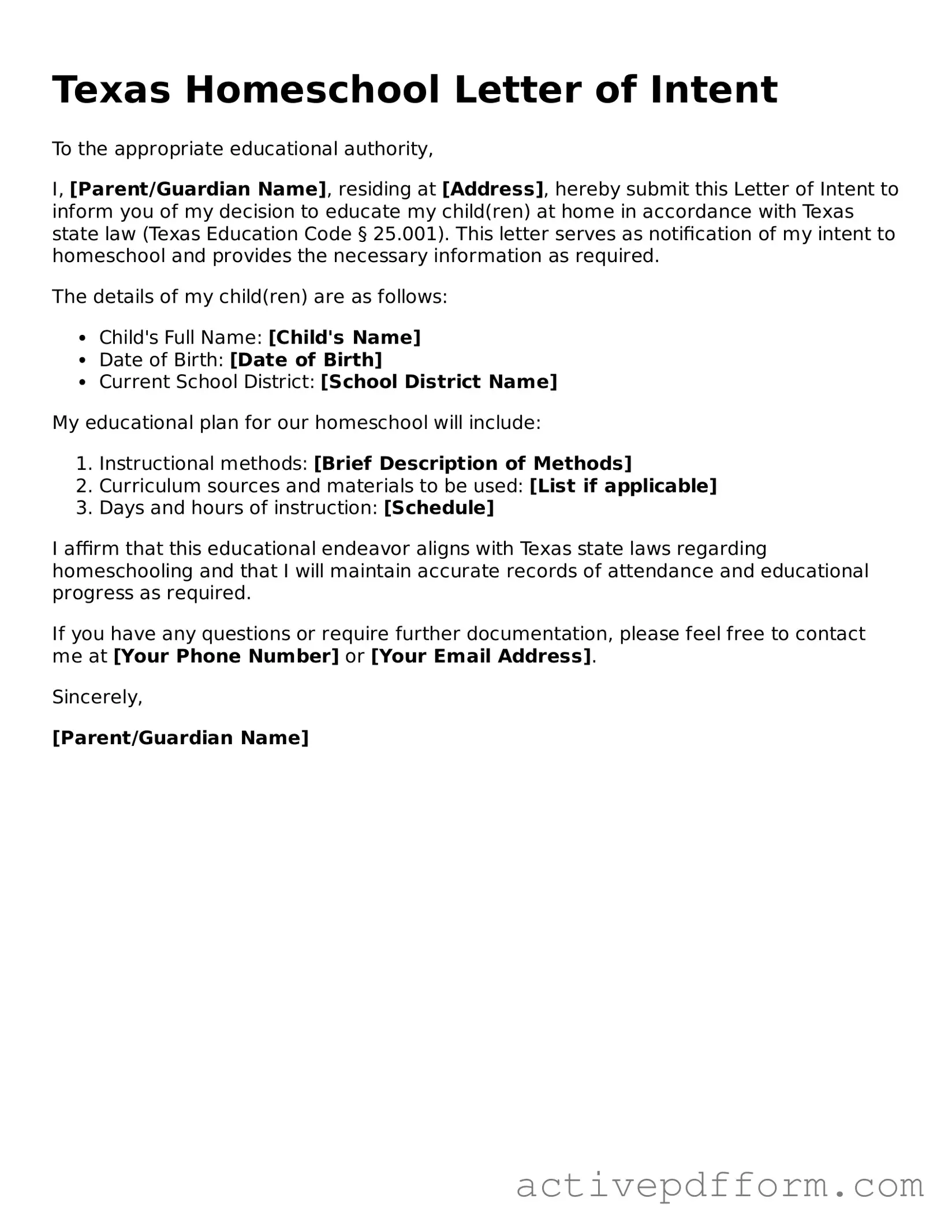Blank Texas Homeschool Letter of Intent Document
The Texas Homeschool Letter of Intent is a formal document that parents must submit to notify the state of their decision to homeschool their children. This essential form outlines the family's intent to provide an educational environment outside of traditional public or private schools. Understanding its significance and the process involved is crucial for parents embarking on the homeschooling journey.
Ready to take the next step? Fill out the form by clicking the button below.
Access Homeschool Letter of Intent Editor Here
